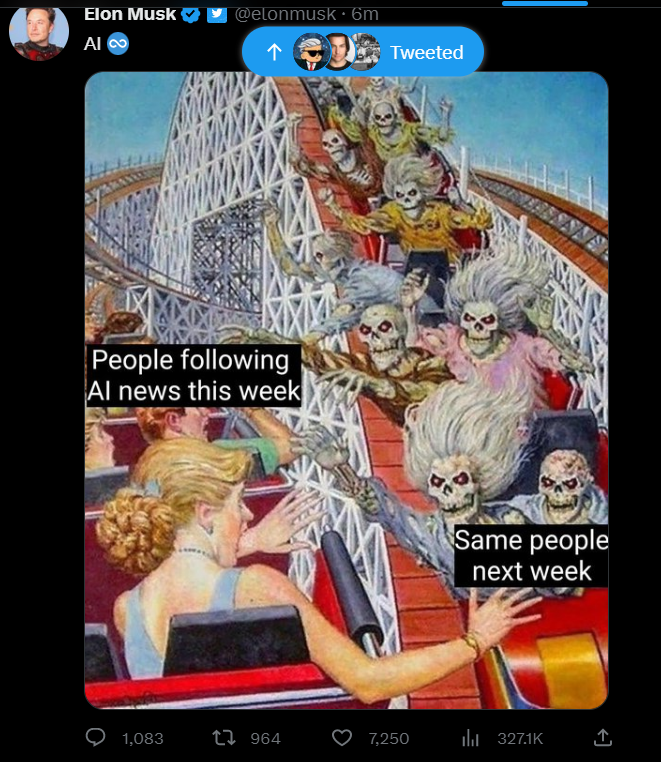It looks like you're using an Ad Blocker.
Please white-list or disable AboveTopSecret.com in your ad-blocking tool.
Thank you.
Some features of ATS will be disabled while you continue to use an ad-blocker.
share:
a reply to: FlyingFox
Jikkyleaks has some stinky cheese for us today along with the 3 tablet scandal.
Jikkyleaks
Everything about covid reeks of stinky cheese but aside from the not prescribing antibiotics and giving the elderly midazaln we have something flying under the radar.
New info for us to nibble at. Hmm seems the British NHS had a fondness for Opensafely with TPP connection to China. Imagine the CCP having full access to all the medical records/data of the residents of England. The sharks are surrounding this, with Wellcome Trust- Jeremy Farrar connected, and Nicole Junkermann.
Imagine those 3 tablets probably cost almost next to nothing but it is pretty obvious they had a different agenda.
Just a few words about the ventilators and bacterial pneumonia...
Most Covid Deaths May be related to something else
Jikkyleaks has some stinky cheese for us today along with the 3 tablet scandal.
Jikkyleaks
Everything about covid reeks of stinky cheese but aside from the not prescribing antibiotics and giving the elderly midazaln we have something flying under the radar.
New info for us to nibble at. Hmm seems the British NHS had a fondness for Opensafely with TPP connection to China. Imagine the CCP having full access to all the medical records/data of the residents of England. The sharks are surrounding this, with Wellcome Trust- Jeremy Farrar connected, and Nicole Junkermann.
Imagine those 3 tablets probably cost almost next to nothing but it is pretty obvious they had a different agenda.
Just a few words about the ventilators and bacterial pneumonia...
Most Covid Deaths May be related to something else
The symbolism cannot be clearer to those with eyes to see. The Old Guard, Dems+RINO etc. is in free fall and they know it. So they put a "non voter"
on the weaponization committee as their head for a reason, as well as poodle head.
These are the expendables, they are there to take the bullets, say horrible absurd things and let middle management hide for a bit longer. Polarity Reality being what it is, the must go deep now to counter the movements = no choice so the madness will get waaaaaaaaaaay worse.
This is very very obvious, it is also hilarious.
CLIP
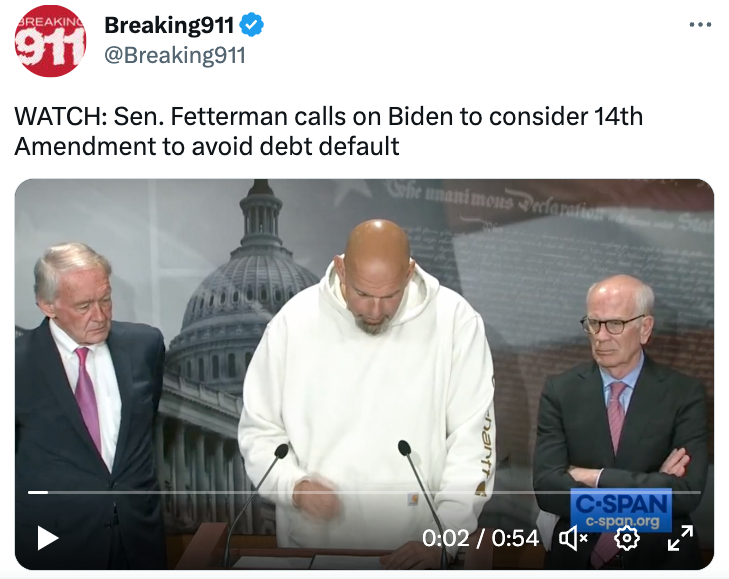
So they trot out this brain dead fresh hoodie wearing goon to do the presser on what needs to be done, even though he does not understand a word of it - none, zero. He cannot read, cannot inflect, and garners no respect whatsoever. He's there to take the bullets, no other reason and it is remarkable. Truly demoralizing.
Buzzfeed Now Admitting it was always A.I.
On an unrelated but equally as funny note. These two absolute idiots are remarkable. They have dug so deep into the victim polarity they cannot stop even when it makes no sense whatsoever. Imagine the mentality of someone that follows this absolutely pathetic duos actions in some meaningful way???

This is the right thing to do.

Want to know why? This is exactly why.

This CLIP is stunning on so many levels. The "hey here's whatcha needta know" chick has made into law enforcement and it is as horrible as one can imagine.
I hope folks can now see how arresting Comey in 2018 would have led to nothing, it would not have even satisfied the blood lust aspect. The world needed to see what's what, the good, the bad, the ugly, and blatantly immoral. The problem is the insect attention span of the population requires a steady stream of this stuff, otherwise another horrifying day in the life of the Royal Brats will simply take over the mind of the sheep and distract them again.
Matters.
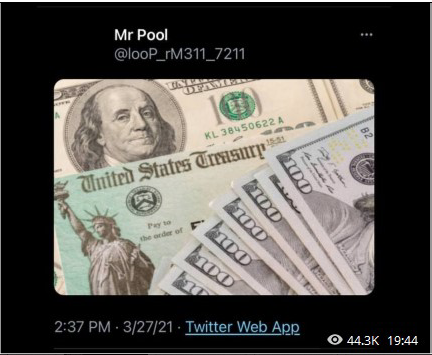
These are the expendables, they are there to take the bullets, say horrible absurd things and let middle management hide for a bit longer. Polarity Reality being what it is, the must go deep now to counter the movements = no choice so the madness will get waaaaaaaaaaay worse.
This is very very obvious, it is also hilarious.
CLIP

So they trot out this brain dead fresh hoodie wearing goon to do the presser on what needs to be done, even though he does not understand a word of it - none, zero. He cannot read, cannot inflect, and garners no respect whatsoever. He's there to take the bullets, no other reason and it is remarkable. Truly demoralizing.
Buzzfeed Now Admitting it was always A.I.
On an unrelated but equally as funny note. These two absolute idiots are remarkable. They have dug so deep into the victim polarity they cannot stop even when it makes no sense whatsoever. Imagine the mentality of someone that follows this absolutely pathetic duos actions in some meaningful way???

This is the right thing to do.

Want to know why? This is exactly why.

This CLIP is stunning on so many levels. The "hey here's whatcha needta know" chick has made into law enforcement and it is as horrible as one can imagine.
I hope folks can now see how arresting Comey in 2018 would have led to nothing, it would not have even satisfied the blood lust aspect. The world needed to see what's what, the good, the bad, the ugly, and blatantly immoral. The problem is the insect attention span of the population requires a steady stream of this stuff, otherwise another horrifying day in the life of the Royal Brats will simply take over the mind of the sheep and distract them again.
Matters.

a reply to: Justoneman
Unrelated
whistle while you work
Trust Kansas?
Unrelated
whistle while you work
Trust Kansas?
edit on 2023/5/18 by CrazyFox because: Kansas?
a reply to: crankyoldman
That's it. This still makes no friggen sense. Can anyone tell me how the 14A can be used to address the national debt?
From: constitutionus.com
This is the only piece that covers anything even remotely related to debt. I'm not sure how the 15A can be used unless there's going to be a hit at anyone that was involved the Jan 6th event. Even then it would mostly hurt the Democrats.
The repeated claim about using the 14A to solve the debt problem is basically pushing for a Civil War to solve the issue (since that's what the 14A is mainly about). So can anyone explain to me how this use of the 14A could work in solving the debt problem?
That's it. This still makes no friggen sense. Can anyone tell me how the 14A can be used to address the national debt?
From: constitutionus.com
4: The validity of the public debt of the United States, authorized by law, including debts incurred for payment of pensions and bounties for services in suppressing insurrection or rebellion, shall not be questioned. But neither the United States nor any State shall assume or pay any debt or obligation incurred in aid of insurrection or rebellion against the United States, or any claim for the loss or emancipation of any slave; but all such debts, obligations and claims shall be held illegal and void.
This is the only piece that covers anything even remotely related to debt. I'm not sure how the 15A can be used unless there's going to be a hit at anyone that was involved the Jan 6th event. Even then it would mostly hurt the Democrats.
The repeated claim about using the 14A to solve the debt problem is basically pushing for a Civil War to solve the issue (since that's what the 14A is mainly about). So can anyone explain to me how this use of the 14A could work in solving the debt problem?
edit on 18-5-2023 by Guyfriday
because: fixed a link
TSA's Facial Recognition Tech Raises Questions About Bias and Data Security
reason.com...
Facial recognition technology coming to West Virginia schools
wvmetronews.com...
Ministers looking at body-worn facial recognition technology for police
www.amp.theguardian.com...
Lufthansa Group Rolls Out Face Recognition Biometrics For Priority Security In Berlin
simpleflying.com...
The Transportation Security Administration's (TSA) trial rollout of biometric facial recognition technology at airport security checkpoints has raised questions about the risks it poses to travelers' privacy and the possibility of discrimination.
The TSA is testing the technology at 16 major airports, and the agency insists that the program is voluntary. However, in a March 14 interview with Kyle Arnold of The Dallas Morning News, TSA Administrator David Pekoske said that if the TSA gets its way, biometric screening technology will eventually not be optional.
reason.com...
Facial recognition technology coming to West Virginia schools
Four West Virginia county school districts have installed or are in the process of installing new facial recognition technology.
Jonah Adkins, director of PK-12 Academic Support at the state Department of Education, said those counties include Marion, Taylor, Doddridge and Putnam.
“What this software does is it provides schools with an additional layer of security. They can enter the faces of all their staffs, their students and well-known visitors and then it sends administrators an alert if an unwanted person were to approach the door or anywhere on campus,” Adkins told members of the state Board of Education last week.
Adkins said there will be a database that will be able to detect criminals.
wvmetronews.com...
Ministers looking at body-worn facial recognition technology for police
Ministers are calling for facial recognition technology to be “embedded” in everyday policing, including potentially linking it to the body-worn cameras officers use as they patrol streets.
Until now, police use of live facial recognition in England and Wales has been limited to special operations such as football matches or the coronation.
Prof Fraser Sampson, the biometrics and surveillance camera commissioner, said the potential expansion was “very significant” and that “the Orwellian concerns of people, the ability of the state to watch every move, is very real”.
Sampson said: “A camera on an officer walking down the street could check the faces against a watchlist of suspects. They could check hundreds if not thousands of people while on duty.
“The technology will be capable of doing many things, not all of which the public would want. In China the algorithm can pick up ethnicity.
“It will be able to estimate age; some manufacturers claim it can estimate someone’s mood or state of anxiety.”
www.amp.theguardian.com...
Lufthansa Group Rolls Out Face Recognition Biometrics For Priority Security In Berlin
Biometrics are coming to Berlin Brandenburg Airport with the introduction of the BER Traveller. Effective immediately, facial recognition will replace boarding passes for Lufthansa Group HON Circle Members and Senators.
simpleflying.com...
"The Wobble" has been an issue for about a week.
youtu.be...
Dutch has been really good. Satellite images of wildfires popping up after hotspots after earthquakes after subterrain waves, as well as The Wobble.
I'll find the episode, if anyone wants it...
youtu.be...
Dutch has been really good. Satellite images of wildfires popping up after hotspots after earthquakes after subterrain waves, as well as The Wobble.
I'll find the episode, if anyone wants it...
a reply to: Justoneman
twitter.com...
twitter.com...
CDC scientists deliberately DELETED the data showing the link between vaccines and autism in 2002. The 2004 DeStefano paper in Pediatrics should be retracted. Here is objective proof that both the CDC and Pediatrics are corrupt. The CDC refused to comment. Please watch this clip
Ripple’s XRP, Stellar’s XLM, and IOTA: The Only Cryptos to Unlock SWIFT Integration in the Billion-Dollar Market
[url]https://www.crypto-news-flash.com/ripples-xrp-stellars-xlm-and-iota-the-only-cryptos-to-unlock-swift-integration-in-the-billion-dollar-market/[/u rl]
Ripple and its native coin XRP, Stellar Lumens (XLM), and IOTA have all unlocked the ability to integrate with SWIFT, the global financial messaging network that facilitates international transactions for banks. This achievement puts these cryptocurrencies in a position within the industry with the potential to disrupt traditional banking systems and offers faster, cheaper, and more efficient alternative transaction methods.
Likewise, these digital currencies have formed partnerships with major players in the industry, including banks and financial institutions, which has helped to further boost their credibility and adoption. As a result, they are now well-positioned to compete against traditional banking systems and drive innovation in the financial industry.
Recall that in April it was announced that Ripple, IOTA, and Stellar Lumen are in line to work with SWIFT under the ISO 20022 regulation; a single standardization approach meant to be used by all financial standards initiatives.
Ripple has been part of the standard body since May 2020.
Earlier this month, Ripple and XRP announced a massive push into the billion-dollar Dubai and Middle East and North Africa (MENA) markets, signaling its determination to succeed as a foremost blockchain payments firm.
Stellar’s XLM takes a slightly different approach, positioning itself as a platform for decentralized financial services. It aims to provide banking services to the unbanked and underbanked population in developing countries, offering low-cost financial transactions through its network.
Stellar has already partnered with IBM to develop blockchain-based solutions for the global financial industry, further cementing its position as a potential disruptor.
[url]https://www.crypto-news-flash.com/ripples-xrp-stellars-xlm-and-iota-the-only-cryptos-to-unlock-swift-integration-in-the-billion-dollar-market/[/u rl]
edit on 19-5-2023 by socialmediaclown because: (no reason given)
Universal Monetary Unit (UMU), Unicoin, Guarantees Banks and Fintechs the Best FX Rates on Cross-Border Payments
www.chinookobserver.com... 5bbde23-0141-55b5-8f19-1213f52805e4.html
Today, the Digital Currency Monetary Authority (DCMA) announced banks and fintech companies now have access to the guaranteed best FX rates for transacting cross-border payments through its money servicing platform, Universal Monetary Unit (UMU), Unicoin.
Banks can attach their customer bank accounts to a UMU wallet and transaction SWIFT-like cross-border payments over digital currency rails completely bypassing the correspondent banking system at guaranteed best-priced FX rates and with instantaneous real-time settlement.
Unicoin leverages artificial intelligence for global treasury management and to hedge against FX rates fluctuations enabling it to offer FOREX PLUS rates whereas most remitters offer FOREX MINUS rates.
For decades, the correspondent banking system has proven to be slow, costly, and inefficient. Because SWIFT has essentially enjoyed a global monopoly on banking cross-border payments, there has been little to no incentive to improve how the global correspondent banking system works.
www.chinookobserver.com... 5bbde23-0141-55b5-8f19-1213f52805e4.html
edit on 19-5-2023 by socialmediaclown because: (no reason given)
a reply to: CrazyFox
Domestic censorship indeed. Truly an understatement. I just wish I had known how big of a role I really played. Things could have been so much different. But the enemy within saw a perfect opportunity to create a fall guy, not to mention God knows how much money they made off of my cluelessness. I should have just trusted my gut. I asked folks on here, and other platforms (from my boomgiggle account ) You would think that someone would have let me know by now. I had to figure it out on my own, and am still finding things out. I pray that I am wrong.
Domestic censorship indeed. Truly an understatement. I just wish I had known how big of a role I really played. Things could have been so much different. But the enemy within saw a perfect opportunity to create a fall guy, not to mention God knows how much money they made off of my cluelessness. I should have just trusted my gut. I asked folks on here, and other platforms (from my boomgiggle account ) You would think that someone would have let me know by now. I had to figure it out on my own, and am still finding things out. I pray that I am wrong.
edit on
19-5-2023 by BioavAilabilityGuy because: (no reason given)
Wait, I was told on a conspiracy site there are no conspiracies... I was told this For the Greater Good.

CLIP
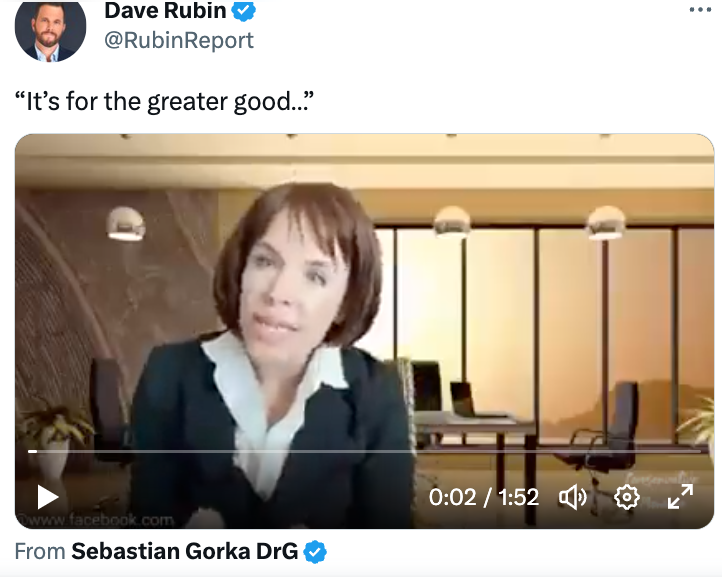

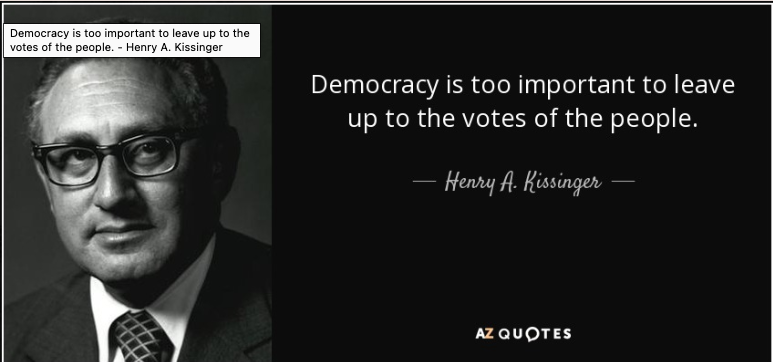
Just a random thought, if the very suspect families can get 1billion from Alex Jones, how much can DJT get from all of those named in the Durham Report? Is there any other evidence needed besides that and the 60+ depositions that were declassed by Gman?
Hoover specialized in blackmail, extortion, and suspect means of enforcing those he served.
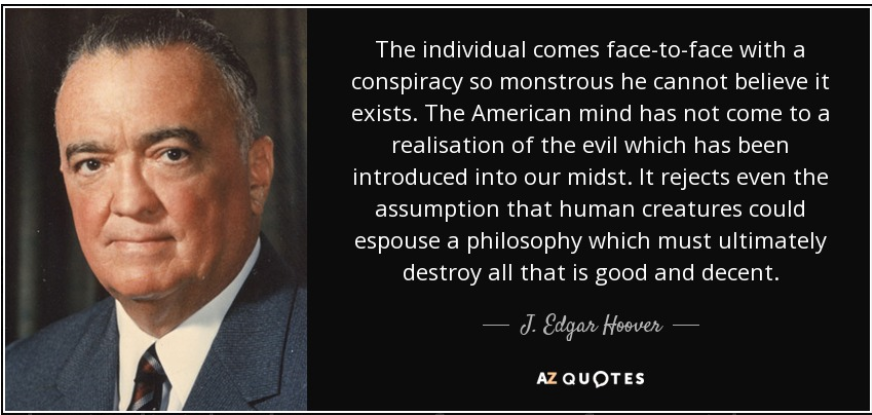
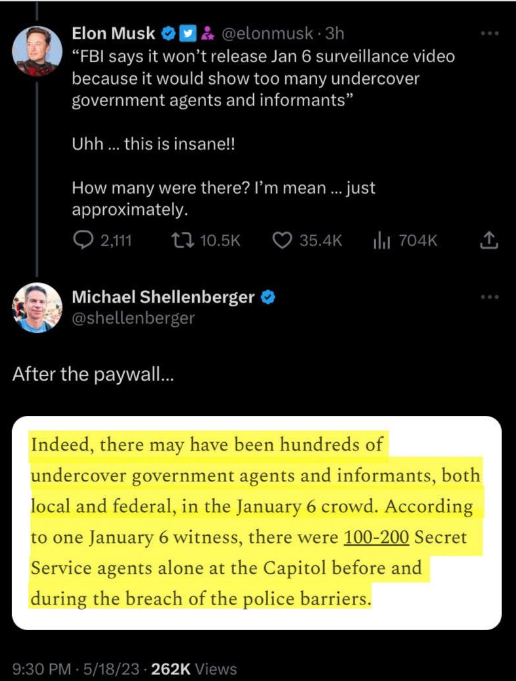
Begs the question --- what would have happened had they simply worked with the Capital Police to keep the doors shut?
For the Greater Good.
I don't think many understand what is going on HERE - CLIP. The Committee is set up, ostensibly, to determine what aspects of the government were weaponized against the people.
The Dems are WORKING AGAINST exposing that. They are not asking probative questions, the are busy with this garbage because they are in the far reaches of the Polarity = they have no choice.
Imagine being so deep that folks working to expose how the government is mind controlling THEIR children, THEIR families, that they will commit political suicide because they must do the opposite of the purpose of the committee (assuming they are human which isn't a good assumption at this point).
This is why things take so long, or at least seem to, because this ping pong effect is in effect, it cannot be circumvented.

CLIP



Just a random thought, if the very suspect families can get 1billion from Alex Jones, how much can DJT get from all of those named in the Durham Report? Is there any other evidence needed besides that and the 60+ depositions that were declassed by Gman?
Hoover specialized in blackmail, extortion, and suspect means of enforcing those he served.


Begs the question --- what would have happened had they simply worked with the Capital Police to keep the doors shut?
For the Greater Good.
I don't think many understand what is going on HERE - CLIP. The Committee is set up, ostensibly, to determine what aspects of the government were weaponized against the people.
The Dems are WORKING AGAINST exposing that. They are not asking probative questions, the are busy with this garbage because they are in the far reaches of the Polarity = they have no choice.
Imagine being so deep that folks working to expose how the government is mind controlling THEIR children, THEIR families, that they will commit political suicide because they must do the opposite of the purpose of the committee (assuming they are human which isn't a good assumption at this point).
This is why things take so long, or at least seem to, because this ping pong effect is in effect, it cannot be circumvented.
edit on 19-5-2023
by crankyoldman because: (no reason given)
a reply to: FlyingFox
This just keeps getting better and better. No doubt everyone is just shocked, shocked that Harvard scientists were caught taking bribes to publish fiction.
Harvard Scientists Caught Taking Bribes
No surprise that they have been doing this and no doubt extended this to the plandemic. After all practice makes perfect.
This is problematic because how can we determine which studies are accurate and which are not?
But this gets better if that is possible.
Failure to Disclose competing Interests
Pfizer again.
Now we have this Heymans chap being an investment advisor writing papers supporting Pfizer jabs.
"Hayman's promoted uptake of Covid-19 vaccination with false, deceptive, unsupported, and exaggerated claims reflecting his competing interests...holding an unrestricted grant from Pfizer." His co-author Leslie T. Cooper is not innocent either. Sort of like a Bonnie and Clyde duo.
I'm not holding my breath expecting Nature to do anything about this but this is not going away.
This just keeps getting better and better. No doubt everyone is just shocked, shocked that Harvard scientists were caught taking bribes to publish fiction.
Harvard Scientists Caught Taking Bribes
No surprise that they have been doing this and no doubt extended this to the plandemic. After all practice makes perfect.
This is problematic because how can we determine which studies are accurate and which are not?
But this gets better if that is possible.
Failure to Disclose competing Interests
Pfizer again.
Now we have this Heymans chap being an investment advisor writing papers supporting Pfizer jabs.
"Hayman's promoted uptake of Covid-19 vaccination with false, deceptive, unsupported, and exaggerated claims reflecting his competing interests...holding an unrestricted grant from Pfizer." His co-author Leslie T. Cooper is not innocent either. Sort of like a Bonnie and Clyde duo.
I'm not holding my breath expecting Nature to do anything about this but this is not going away.
a reply to: Nevercompromise
When Trump was sworn in as POTUS I saw the Letter (On the Net ) He sent to the Miami Court Bankrupting the USA INC. what happen to the Info. I also have seen the The Federal reserve cannot Print Dollars what Happen.....The IRS Moved under the Treasury Why is Steve T Muschin Printed on the 'notes' I had a Electronic signature on Govmt documentation before I retired, They Had to be your Legal signature why all signatures on the Hundred-dollar bills all on the Left side.....Sorry folks JUST me asking questions... If they are Federal reserve Notes why No Federal reserve Chairman signature? You can only wind an old watch so tight before the Main spring SNAPS..... Sorry old and tired...
When Trump was sworn in as POTUS I saw the Letter (On the Net ) He sent to the Miami Court Bankrupting the USA INC. what happen to the Info. I also have seen the The Federal reserve cannot Print Dollars what Happen.....The IRS Moved under the Treasury Why is Steve T Muschin Printed on the 'notes' I had a Electronic signature on Govmt documentation before I retired, They Had to be your Legal signature why all signatures on the Hundred-dollar bills all on the Left side.....Sorry folks JUST me asking questions... If they are Federal reserve Notes why No Federal reserve Chairman signature? You can only wind an old watch so tight before the Main spring SNAPS..... Sorry old and tired...
edit on 19-5-2023 by ZED332L because: (no
reason given)
a reply to: CrazyFox
Everyone should brace themselves for this-
Plan to Build NIH-Funded Bat Research Lab at CSU, Fort Collins, Colorado
We have a direct link to EcoHealth Alliance and the WIV.
The Bat Alliance: "This new alliance was a collaboration between CSU, EcoHealth Alliance and the NIH's Rocky Mountain Laboratories with the goal of building a bat research facility at CSU." This group then consolidated into One Health. Now where have we heard that term before?
To make matters worse there is an email link to the Wuhan lab.
Just to give us that warm fuzzy feeling Bill Gates dream "scientists were developing - 'scalable vectored' and 'self disseminating' vaccines to spread contagiously between bats". Humans up to bat next.
Who wouldn't be concerned with their history of a lab leak.
----
Tightening my tin foil hat, what are the chances that Colorado had the Japanese Beetle invasion in 2018. CSU took advantage of the opportunity to release parasites to infect them and reduce their population. Granted people would be supportive but it is a slippery slope.
What are the consequences of "releasing genetically engineered self-spreading 'vaccines' into the wild?
CSU Takes On The Japanese Beetle
Everyone should brace themselves for this-
Plan to Build NIH-Funded Bat Research Lab at CSU, Fort Collins, Colorado
We have a direct link to EcoHealth Alliance and the WIV.
The Bat Alliance: "This new alliance was a collaboration between CSU, EcoHealth Alliance and the NIH's Rocky Mountain Laboratories with the goal of building a bat research facility at CSU." This group then consolidated into One Health. Now where have we heard that term before?
To make matters worse there is an email link to the Wuhan lab.
Just to give us that warm fuzzy feeling Bill Gates dream "scientists were developing - 'scalable vectored' and 'self disseminating' vaccines to spread contagiously between bats". Humans up to bat next.
Who wouldn't be concerned with their history of a lab leak.
----
Tightening my tin foil hat, what are the chances that Colorado had the Japanese Beetle invasion in 2018. CSU took advantage of the opportunity to release parasites to infect them and reduce their population. Granted people would be supportive but it is a slippery slope.
What are the consequences of "releasing genetically engineered self-spreading 'vaccines' into the wild?
CSU Takes On The Japanese Beetle
NY Fed, Singapore Regulator Verify CBDC Use for Cross-Border Payments
www.coindesk.com...
NY Fed Teams With Singapore on Multicurrency Cross-Border CBDC Project
www.pymnts.com...
Central bank digital currency (CBDC) systems operating on different types of networks can be used for cross-border and cross-currency payments, according to a new report published by researchers with the New York Federal Reserve and Monetary Authority of Singapore (MAS).
www.coindesk.com...
NY Fed Teams With Singapore on Multicurrency Cross-Border CBDC Project
New York Federal Reserve’s New York Innovation Center (NYIC) and the Monetary Authority of Singapore (MAS) Friday (May 19) published the results of Project Cedar Phase II x Ubin+, a joint project investigating whether distributed ledger technology (DLT) could be used to improve the efficiency of cross-border wholesale payments and settlements involving multiple currencies.
The study found that they could.
Our research collaboration with the MAS reveals key opportunities for central bank innovation to play an important role in easing wholesale payment flows globally and improving settlement outcome,” said Michelle Neal, head of the Markets Group at the New York Fed.
“Central banks can enable interoperability of wholesale CBDCs to facilitate more efficient cross-border payment flows including for less liquid currencies, without requiring a common infrastructure,” added Leong Sing Chiong, deputy managing director (markets and development), at MAS.
www.pymnts.com...
originally posted by: Guyfriday
a reply to: crankyoldman
That's it. This still makes no friggen sense. Can anyone tell me how the 14A can be used to address the national debt?
From: constitutionus.com
4: The validity of the public debt of the United States, authorized by law, including debts incurred for payment of pensions and bounties for services in suppressing insurrection or rebellion, shall not be questioned. But neither the United States nor any State shall assume or pay any debt or obligation incurred in aid of insurrection or rebellion against the United States, or any claim for the loss or emancipation of any slave; but all such debts, obligations and claims shall be held illegal and void.
This is the only piece that covers anything even remotely related to debt. I'm not sure how the 15A can be used unless there's going to be a hit at anyone that was involved the Jan 6th event. Even then it would mostly hurt the Democrats.
The repeated claim about using the 14A to solve the debt problem is basically pushing for a Civil War to solve the issue (since that's what the 14A is mainly about). So can anyone explain to me how this use of the 14A could work in solving the debt problem?
So, it's been over 12 hours and not one person can explain this too me. That's telling, but what's also telling is this: Q-2901
Q !!mG7VJxZNCI ID: 087672 No.5399134 📁
Feb 26 2019 16:04:55 (EST)
[INTERNAL CIVIL WAR]
All-out assault against the duly elected President of the United States.
We have never experienced anything like this in our history.
Treason & sedition at the highest levels of office throughout many departments [F + D].
Propaganda arm [FAKE NEWS MEDIA] of the D party in full attack mode (no facts, only statements).
Propaganda arm [FAKE NEWS MEDIA] of the D party prevent-limit 'sheep (you)' from learning the TRUTH.
Propaganda arm [FAKE NEWS MEDIA] of the D party retain-control of NARRATIVE (control over you).
House D's in full attack mode (no facts, only statements).
Senate D's in full attack mode (no facts, only statements).
THIS IS THEIR LAST STAND.
Fear of prosecution?
Fear of the public learning the TRUTH?
Fear of losing POWER?
Bribes, blackmail, threats, etc. all being deployed.
WE ARE AT WAR.
Q
As it stands, the only foreseeable way for the President to legally use the 14A to solve the debt problem is to instigate a Civil War. We keep getting told that the 14A can be used, but somehow the narrative being pushed doesn't quite add up as it being a legal move. I bet, and this seems to be just me, that the reason Bill Clinton said that he would use the 14A, is because most people don't understand what the US Constitution says and means.
I guess it was Bill Clinton selectively forgetting the 16A:
From:constitutionus.com< br />
16th Amendment of the Constitution
The Congress shall have power to lay and collect taxes on incomes, from whatever source derived, without apportionment among the several States, and without regard to any census or enumeration.
It would make legal sense to have Congress enact a new tax to pay the debt down and reduce spending, but oh wait... That's what Biden doesn't want. It would seem that Biden wants us to be at war with ourselves.
Seriously folks, does anyone have an explanation as to how the 14A can be used by the President to prevent the Debt Problem? It just makes no sense to me why anyone would state that, nor does it make any sense to propagandize it for the masses.
Republicans walk out of debt ceiling talks, say White House isn't being 'reasonable
www.cnbc.com...
Yellen warns bank CEOs of 'severe' economic consequences if debt ceiling isn't addressed
amp.cnn.com...
Ray Dalio says debt-ceiling debate sets stage for ‘disastrous financial collapse’
www.marketwatch.com...
Until people are willing to have reasonable conversations about how you can actually move forward and do the right thing, then we're not gonna sit here and talk to ourselves," Rep. Garret Graves, R-La., told reporters.
We decided to press pause because it's just not productive," he added. Graves said he did not know if talks would resume this weekend.
www.cnbc.com...
Yellen warns bank CEOs of 'severe' economic consequences if debt ceiling isn't addressed
During a meeting with more than two dozen bank CEOs on Thursday, Treasury Secretary Janet Yellen stressed the urgent need for Congress to address the debt ceiling, according to a readout of the meeting from the Treasury Department.
The meeting, which took place in Washington and included JPMorgan Chase CEO Jamie Dimon and Citigroup CEO Jane Fraser, focused in part on the risks on the debt ceiling. Yellen also held a meeting Thursday with executives from mid-size banks, a person familiar with the matter told CNN, as the United States nears June 1, the date the nation could run out of cash to pay its bills unless lawmakers raise the debt ceiling.
Yellen described how a failure to raise or suspend the debt limit would be "catastrophic" for the financial system, families and businesses — a point echoed by Dimon and other executives themselves in public comments
amp.cnn.com...
Ray Dalio says debt-ceiling debate sets stage for ‘disastrous financial collapse’
“In either case that creates a debt crisis that is like the runs on the banks that we have been seeing, but with government bonds being what is sold and the run on the bank being a run on the central bank,” Dalio wrote.
www.marketwatch.com...
new topics
-
Those stupid GRAVITE commercials
Rant: 1 minutes ago -
Let's Buy Greenland
General Chit Chat: 1 hours ago -
Planned Civil War In Britain May Be Triggered Soon
Social Issues and Civil Unrest: 3 hours ago -
Claim: General Mark Milley Approved Heat and Sound Directed Energy Weapons During 2020 Riots
Whistle Blowers and Leaked Documents: 5 hours ago
top topics
-
Claim: General Mark Milley Approved Heat and Sound Directed Energy Weapons During 2020 Riots
Whistle Blowers and Leaked Documents: 5 hours ago, 9 flags -
Planned Civil War In Britain May Be Triggered Soon
Social Issues and Civil Unrest: 3 hours ago, 5 flags -
Let's Buy Greenland
General Chit Chat: 1 hours ago, 3 flags -
Those stupid GRAVITE commercials
Rant: 1 minutes ago, 0 flags
active topics
-
Greatest thing you ever got, or bought?
General Chit Chat • 25 • : Nickn4 -
Those stupid GRAVITE commercials
Rant • 0 • : FlyersFan -
Let's Buy Greenland
General Chit Chat • 7 • : MindBodySpiritComplex -
January 6th report shows disturbing trend (nobody is shocked)
US Political Madness • 69 • : JadedGhost -
Get Ready - Here comes the Bird Flu Pandemic - Millions are Notified
Diseases and Pandemics • 68 • : FullHeathen -
Remember These Attacks When President Trump 2.0 Retribution-Justice Commences.
2024 Elections • 130 • : network dude -
Gravitic Propulsion--What IF the US and China Really Have it?
General Conspiracies • 28 • : fringeofthefringe -
Sorry to disappoint you but...
US Political Madness • 39 • : mysterioustranger -
Meta Llama local AI system is scary good
Science & Technology • 44 • : charlyv -
Claim: General Mark Milley Approved Heat and Sound Directed Energy Weapons During 2020 Riots
Whistle Blowers and Leaked Documents • 19 • : Oldcarpy2

